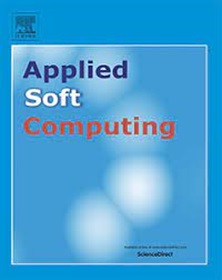检测高级持续性威胁:遗传编程方法
IF 7.2
1区 计算机科学
Q1 COMPUTER SCIENCE, ARTIFICIAL INTELLIGENCE
引用次数: 0
摘要
高级持续性威胁(APT)是一类令人生畏的网络攻击,以其持久性、复杂性和针对性而著称。这些攻击由积极性极高的对手协调,对组织和个人构成严重威胁,通常以隐蔽的方式运行并躲避检测。现有研究主要侧重于应用机器学习(ML)方法分析网络流量数据以检测 APT,而本文则介绍了一种利用遗传编程(GP)的新方法。所提出的方法不仅能检测 APT 攻击,还能通过 GP 的进化能力识别其特定的生命周期阶段。该方法的有效性在于,即使在实例数量有限的类别中,它也能出色地检测出复杂的模式,而这对于传统的 ML 技术来说往往是一项挑战。该方法涉及进化和优化其模型,以有效学习和适应复杂的 APT 行为。利用公开数据集进行的实验展示了所提方法在不同 APT 阶段的功效。结果表明,与相关工作中表现最佳的模型相比,所提出的方法 GPC 在平衡准确性方面提高了 3.71%。此外,对最佳进化 GP 模型的全面分析揭示了有关已识别特征和重要模式的宝贵见解。这项研究通过利用 GP 的功能推进了 APT 检测范式,为应对这些持续性威胁提供了一个全新而有效的视角。本文章由计算机程序翻译,如有差异,请以英文原文为准。
Detection of advanced persistent threat: A genetic programming approach
Advanced Persistent Threats (APTs) are an intimidating class of cyberattacks known for their persistence, sophistication, and targeted nature. These attacks, coordinated by highly motivated adversaries, pose a grave risk to organizations and individuals, often operating stealthily and evading detection. While existing research primarily focuses on applying Machine Learning (ML) methods to analyze network traffic data for APT detection, this article introduces a novel approach that utilizes Genetic Programming (GP). The proposed method not only detects APT attacks but also identifies their specific life cycle stages through the evolutionary capabilities of GP. Its effectiveness lies in its ability to excel in detecting intricate patterns, even within classes with a limited number of instances, a feat that is often challenging for traditional ML techniques. The method involves evolving and optimizing its models to effectively learn and adapt to complex APT behaviors. Experimentation with a publicly available dataset showcases the efficacy of the proposed method across diverse APT stages. The results demonstrate that the proposed method, GPC, achieves a 3.71% improvement in balanced accuracy compared to the best-performing model from related works. Moreover, a thorough analysis of the best-evolved GP model uncovers valuable insights about identified features and significant patterns. This research advances the APT detection paradigm by leveraging GP’s capabilities, providing a fresh and effective perspective on countering these persistent threats.
求助全文
通过发布文献求助,成功后即可免费获取论文全文。
去求助
来源期刊

Applied Soft Computing
工程技术-计算机:跨学科应用
CiteScore
15.80
自引率
6.90%
发文量
874
审稿时长
10.9 months
期刊介绍:
Applied Soft Computing is an international journal promoting an integrated view of soft computing to solve real life problems.The focus is to publish the highest quality research in application and convergence of the areas of Fuzzy Logic, Neural Networks, Evolutionary Computing, Rough Sets and other similar techniques to address real world complexities.
Applied Soft Computing is a rolling publication: articles are published as soon as the editor-in-chief has accepted them. Therefore, the web site will continuously be updated with new articles and the publication time will be short.
 求助内容:
求助内容: 应助结果提醒方式:
应助结果提醒方式:


